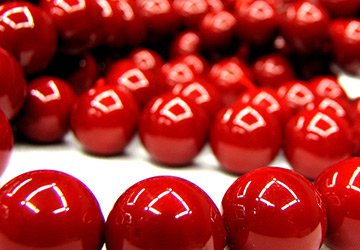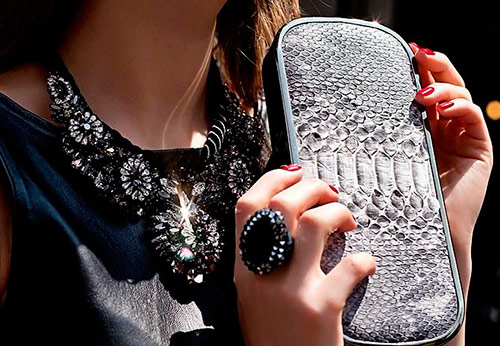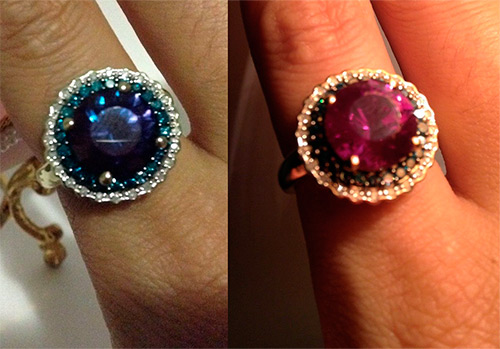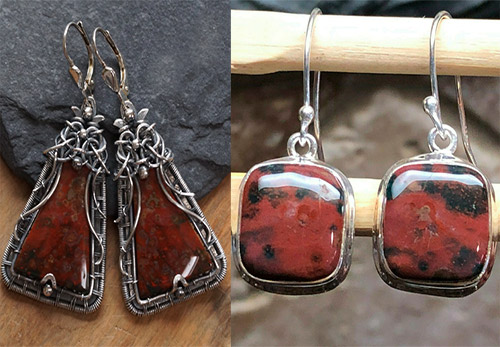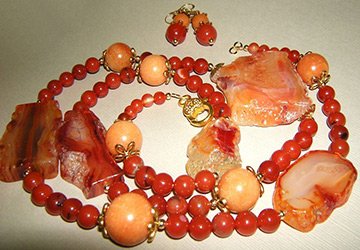Fashion Jewelry
Corals - origin, properties and decorations
Corals immerse us in the atmosphere of the amazing underwater world. Red corals look like fossilized algae, and their color is reminiscent of blood. In the days of Ancient Rome, coral was used to make beads, amulets, various figurines, including those on the theme of mythological plots. Coral has been known since antiquity. For a long time they did not know which category to rank him in. Some argued that it was a stone, others that it was a plant.
All the controversy was fantastical. The ancient Romans considered corals to be plants, especially since they really looked like tree branches. The ancient encyclopedist Theophrastus in his famous work "On Stones" writes: "Coral is like a stone, it is red in color, round in shape, like a root, and it grows in the sea." Pliny the Elder also did not know where to define coral - to plants or animals.
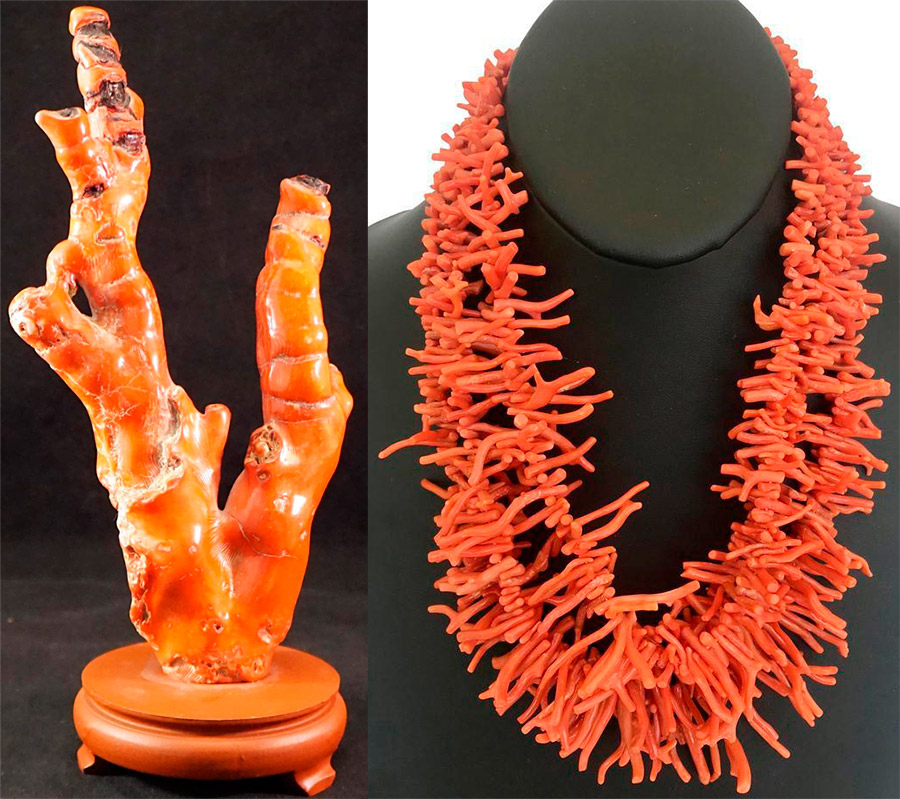
The world is still full of intriguing secrets, and even more so at that time. Many ancient Greek myths tell us in great detail about the origin of corals. The Greeks associated corals with gorgonians, snake-headed monsters, which at one glance turned all life into stone.
Coral was known to the ancient Sumerians. During the excavations of Babylon, archaeologists have discovered many gizmos decorated with corals, some of which are more than five thousand years old. It is known from the Bible that the ancient Jews used pieces of coral as a means of payment, evaluating them on a par with silver and gold.
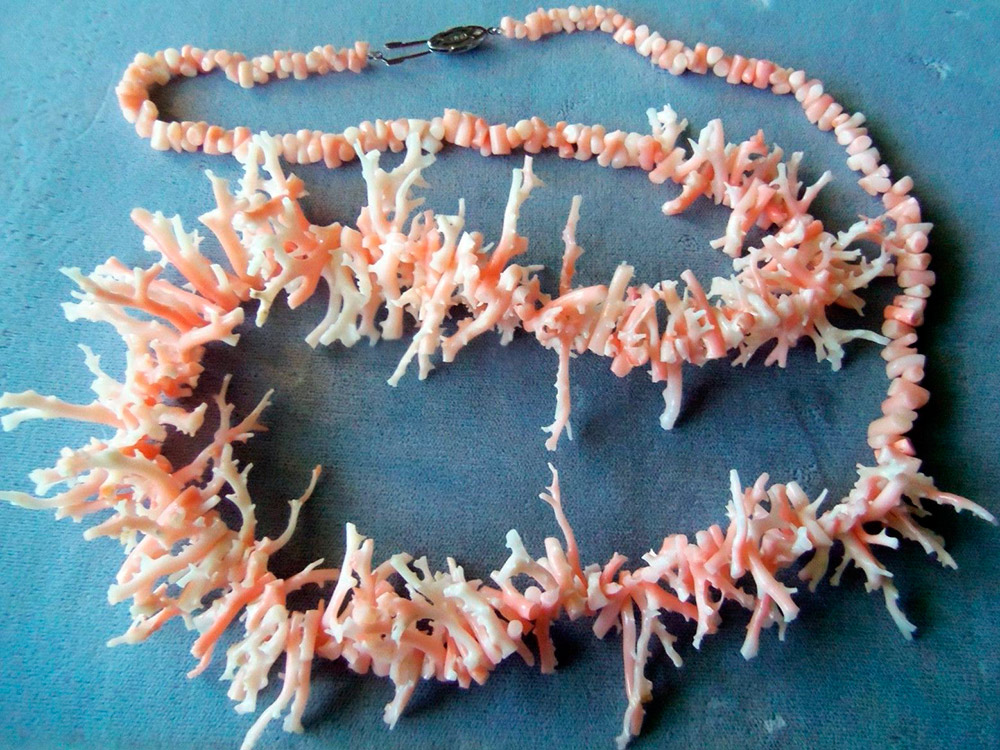
Corals were used as decorations by the Sarmatians and Celts. In Russia, red corals were brought by overseas merchants. Preserved fur coat of Boris Godunov, decorated with corals, or, as they were called then, "korolki".
Some ancient gems that have survived to this day are carved from coral. Rosary beads and small crucifixes were cut from it. Coral products were also popular during the Renaissance. Coral products from Sicily were famous.
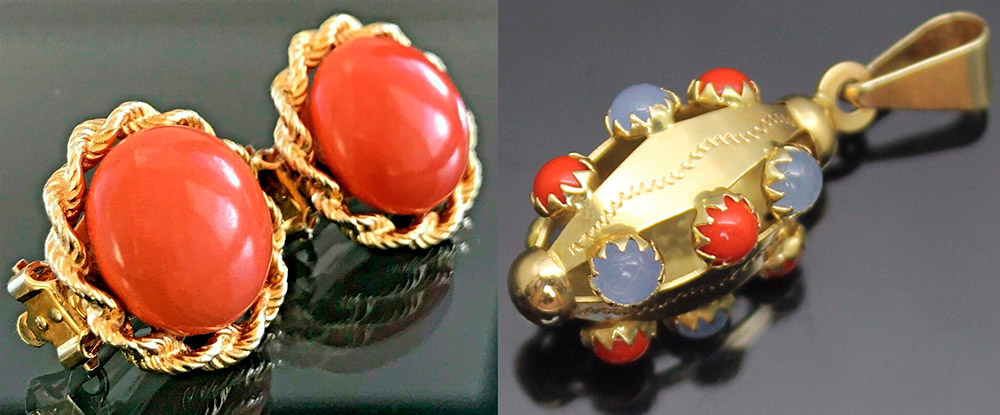
Corals are not only red. Among them there are white, pearlescent, delicate flesh-pink, orange-pink, reminiscent of the color of salmon, there are dark reds, purple-red and even black and blue. Their shade depends on the lighting and the presence of trace elements in the sea water. There are more than 300 shades in total. But red corals are considered the most popular in jewelry.
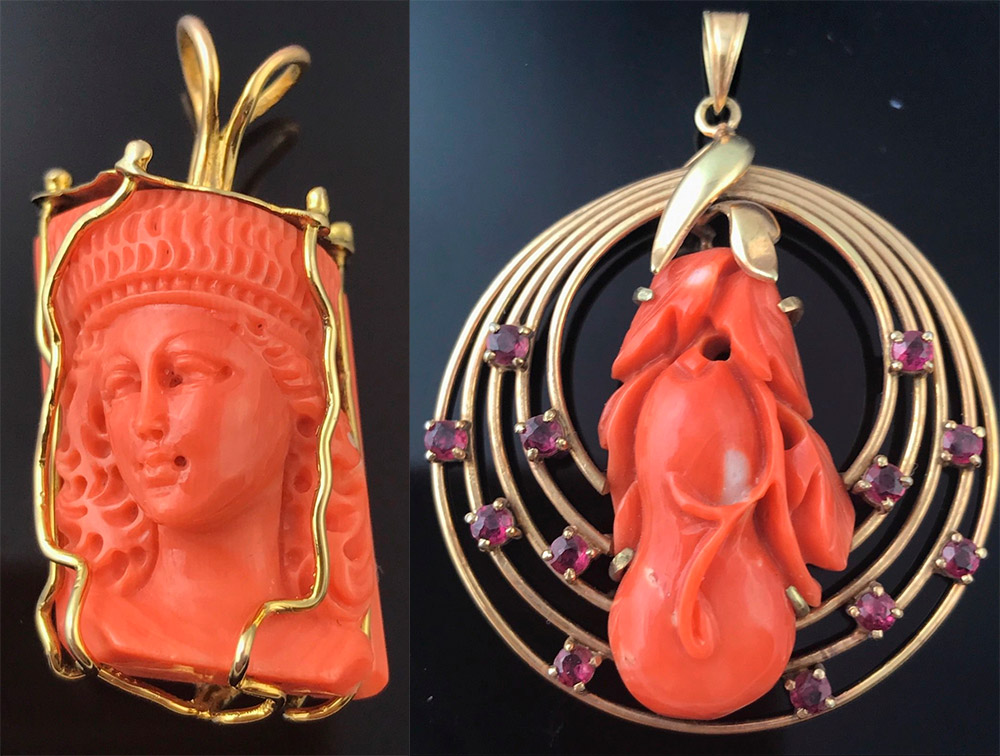
Coral jewelry and products
Corals are called the gems of the sea. They can be considered one of the first materials that people began to use for jewelry. This is probably why Pisces is considered the zodiac sign of coral, and the patron planet is Neptune.
Coral density 2.6 - 2.7; hardness about 3.75 on the Mohs scale.
They were used to decorate cups, dishes, caskets, inlaid belts, combs, weapon handles and cult items. Medieval jewelers loved coral as much as ivory. Pieces of coral were used to decorate the handles of cutlery - forks, spoons. The coral service was also made in Russia. It was made in 1846 by the craftsmen of the Imperial Porcelain Factory for the Tsaritsyn Pavilion in Peterhof.
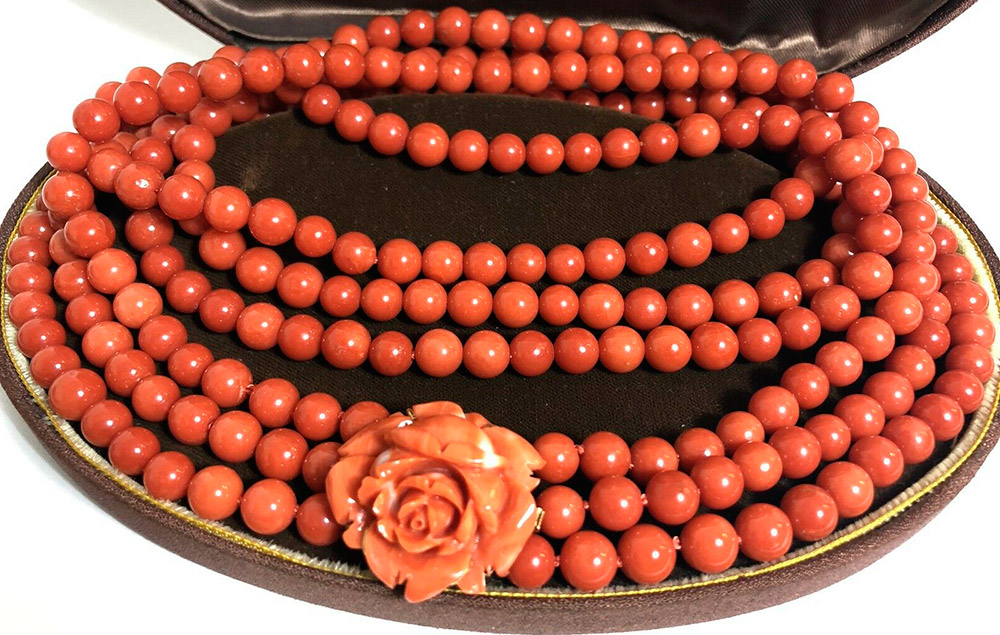
There are several hundred species of coral, but only 7 of them are used in the jewelry industry. In Europe, they were engaged in coral carving. And today, inserts for bracelets, earrings, brooches, rings, pendants are cut from corals. Coral beads are classics of women's jewelry.
Corals are placed in a noble setting - gold and silver, combined with semi-precious stones, compositions with pomegranate or rauchtopaz are especially beautiful. The beauty of the material can be conveyed with the help of cabochon cut, creating perfectly smooth inserts. They immerse us in the atmosphere of the amazing underwater world.
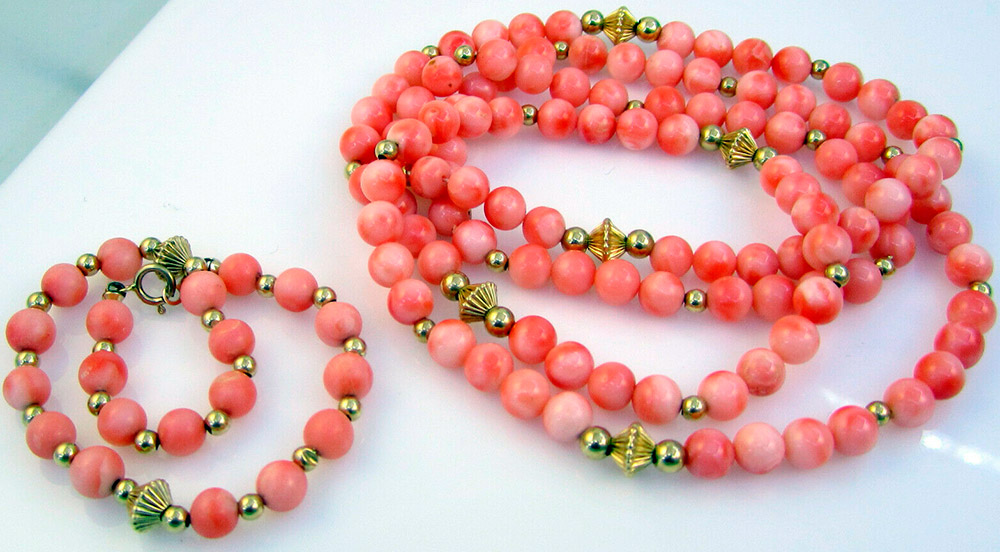
Coral growing areas
Coral habitats stretch along the equator. Coral reefs are unevenly distributed. They are found along the eastern coast of Africa. The most valuable red coral is found in the Mediterranean Sea. It has long been mined near the coast of Spain, Italy, the Balkan countries, France, Morocco, Tunisia, Algeria.
Today, the leading positions in the extraction of red coral are taken by Italy, Spain, Tunisia. They try to limit the volume of production, because the coral grows rather slowly. Its twig grows by only a few millimeters over the course of a year. Most of the coral mined is processed in Italy in the small town of Tore del Greco, located near Naples.
Coral cannot be called a stone. It is born in the sea like a pearl.
Corals are the skeletons of marine polyp colonies, composed of hard calcite and aragonite. It is known from biology that sea polyps are relatives of anemones, invertebrate sea creatures that look like bright flowers. They are sometimes called sea anemones. But in general, the bright rays coming from them are actually tentacles that are looking for their prey in order to get enough. With their help, the anemones and move.
However, not all polyps lead such a mobile lifestyle and have such a muscular body. Some polyps lead a different life. They build strong, branched "twigs" that surround them on all sides. At the slightest danger, these creatures hide inside buildings, but soon they stick out their tentacles again.
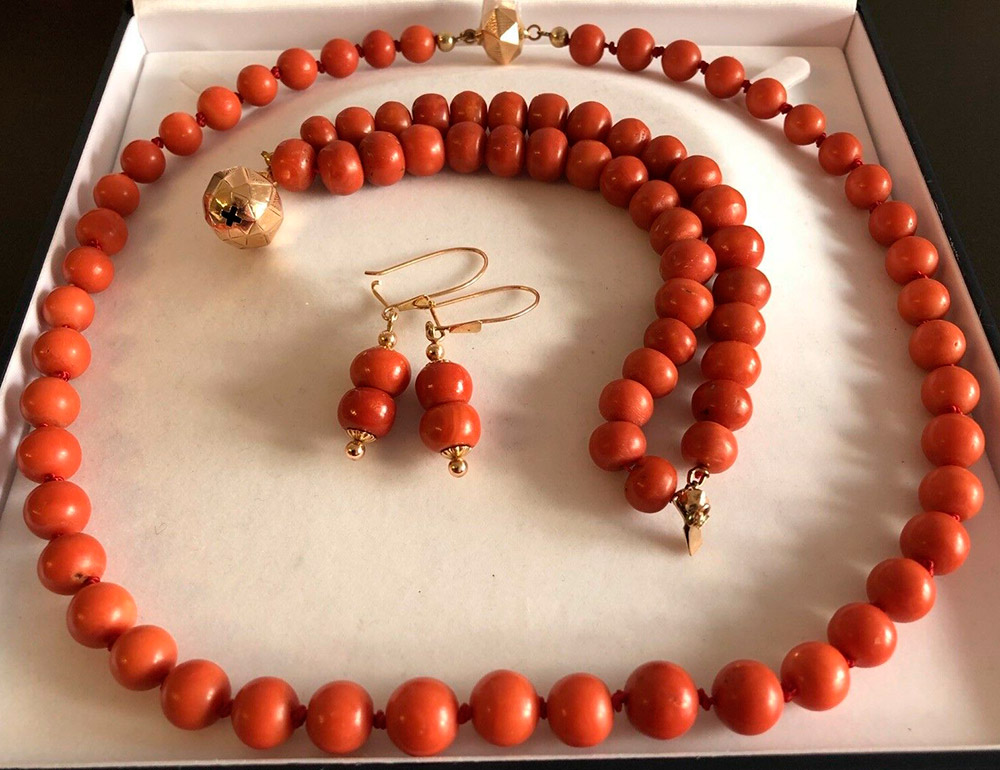
As a result of this painstaking construction, coral reefs are formed. The largest is called the Great Barrier Reef. It stretches along the entire east coast of Australia for hundreds of kilometers.
There are many coastal coral structures in the Pacific Ocean - coastal reefs. Valuable coral reefs are formed by the polyps Corallium rubrum, which live at depths from 10 to 200 meters in the Mediterranean Sea and in the Atlantic Ocean, in the Canary Islands.
In general, the depth of coral habitation can reach 1000 m. Sometimes this is due to the fact that the seabed is not stable, it can rise and fall due to the movement of earth layers. The most popular red corals live at depths of 30 to 500 meters and grow several tens of millimeters per year.
The magical and medicinal properties of corals.
Coral beads were worn by the Maya Indians as not only decoration, but also a talisman against evil forces. As you can see, such unusual natural products could in no way be unnoticed by man.
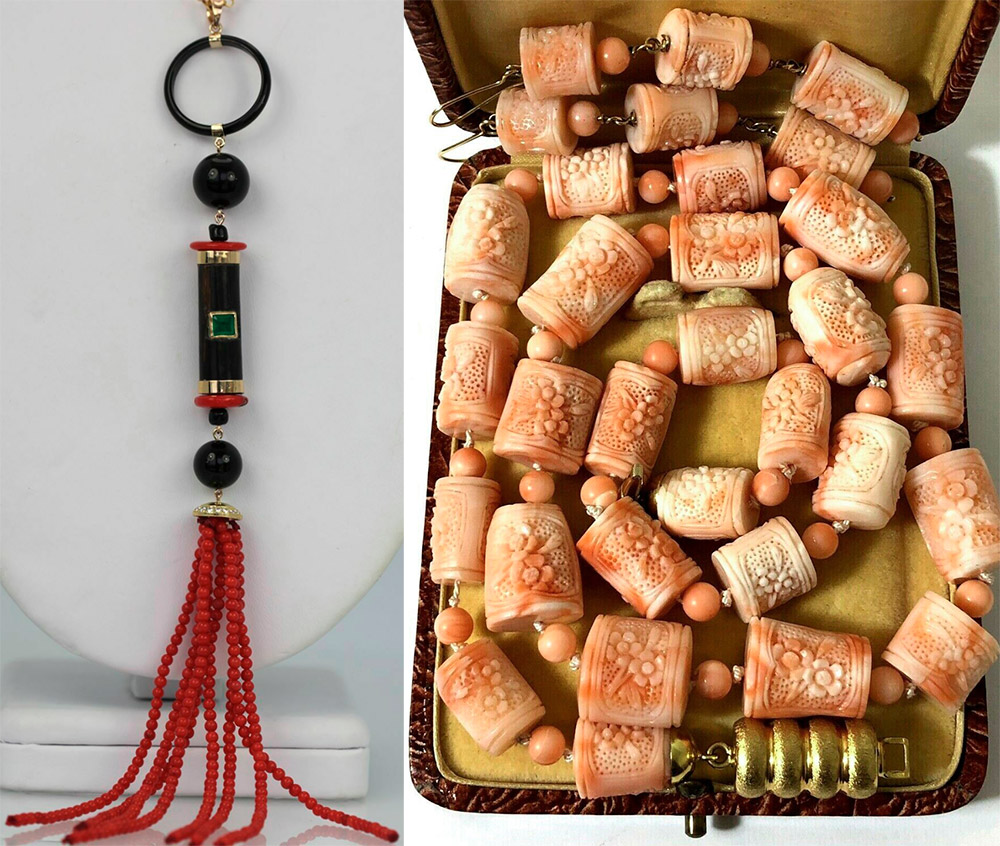
In many countries, including those of Ancient Greece, pink corals have become symbols of immortality and happiness. Amulets were made from corals, believing that they can protect against typhoons and lightning. In ancient Rome, corals, which looked like a human figure, were treated with special respect. Pieces of coral were hung on the branches of trees, believing that this would result in a richer harvest.
And today they believe that coral has a beneficial effect on the human psyche, contributing to the development of logic and intuition. In addition, lithotherapists claim that coral changes its color when it comes into contact with the body of a sick person, and thus can predict imminent death. As for the disease, you can believe it, since the disease changes the physiology of a person, affects the condition of his skin. And this, in turn, can affect such materials that contain protein.
There are claims that corals have a beneficial effect on blood circulation and cardiovascular system, improve memory. According to Ayurveda, red coral controls the condition of the skin, digestion, metabolism and neutralizes negative conditions - anger, envy. It is useful for sore throat and thyroid disorders.
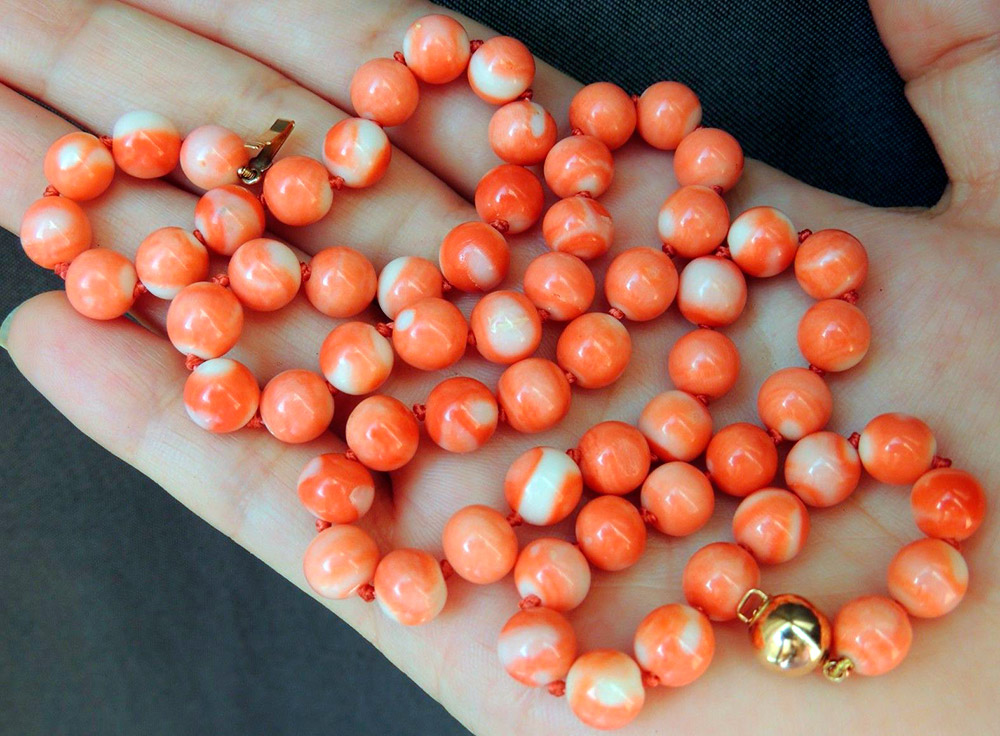
In 1972, Gilson's company in Switzerland obtained synthetic coral from calcite powder. It was named so "Gilson's coral". With the help of synthesis, 12 different shades were obtained. The properties of the obtained corals are close to natural ones, but, nevertheless, they differ.
Coral is synthesized in a variety of ways. We cannot distinguish synthesized from natural.This can only be done by a specialist gemologist. We should be content with only a careful consideration of external signs. True coral is rarely uniformly colored. It is banded, and this is its distinctive feature.
To more accurately clarify its naturalness, you need to inflict some damage on the coral. For example, in a coral twig cut across, a radiant structure is clearly visible. And the artificial one consists of pieces and crumbs.
Untreated corals are matte and polished with wax polishes to make them shine. Some defects are corrected with resins. The shine of real coral turns out to be soft, even "oily".

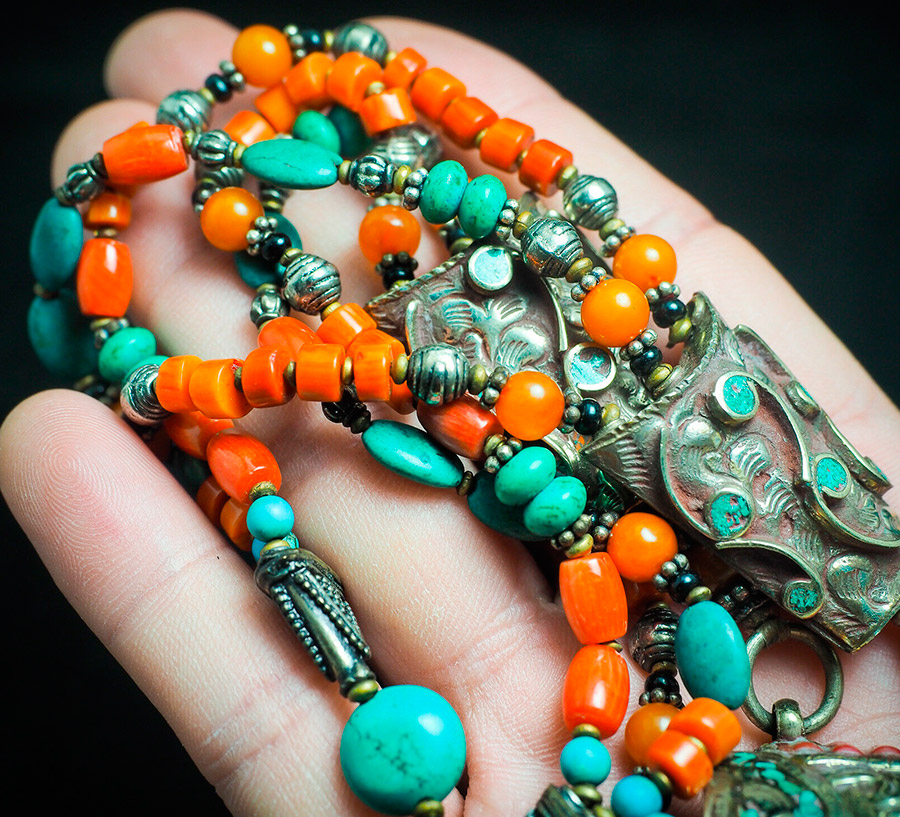
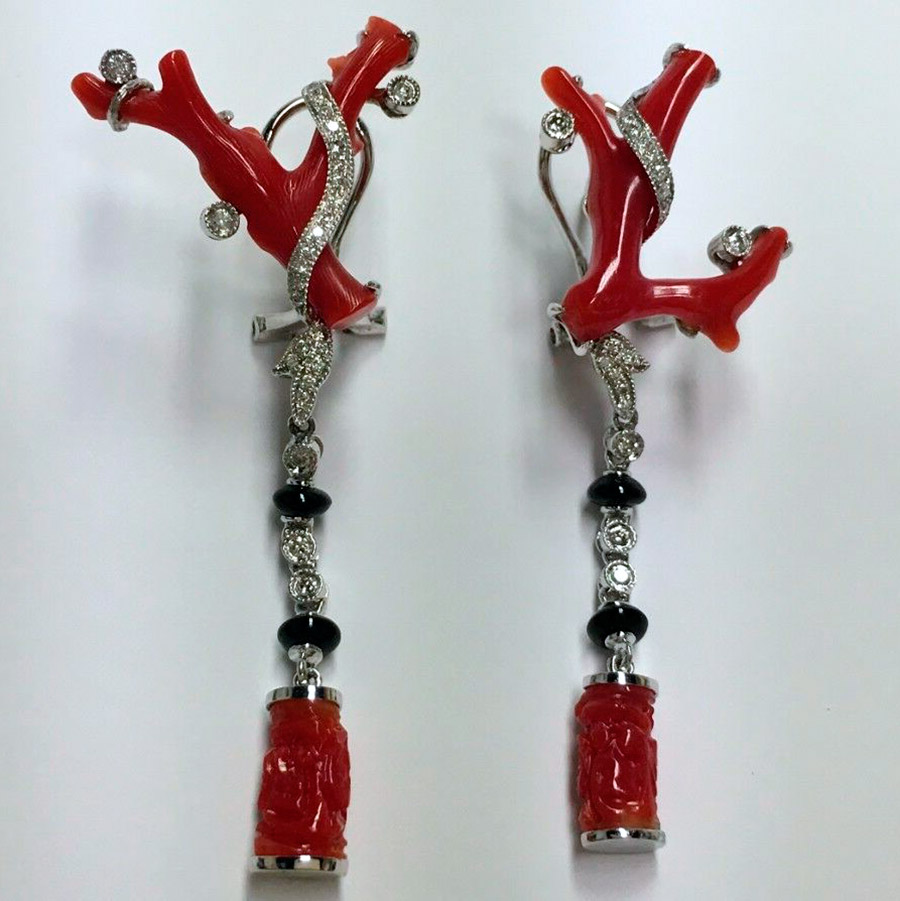
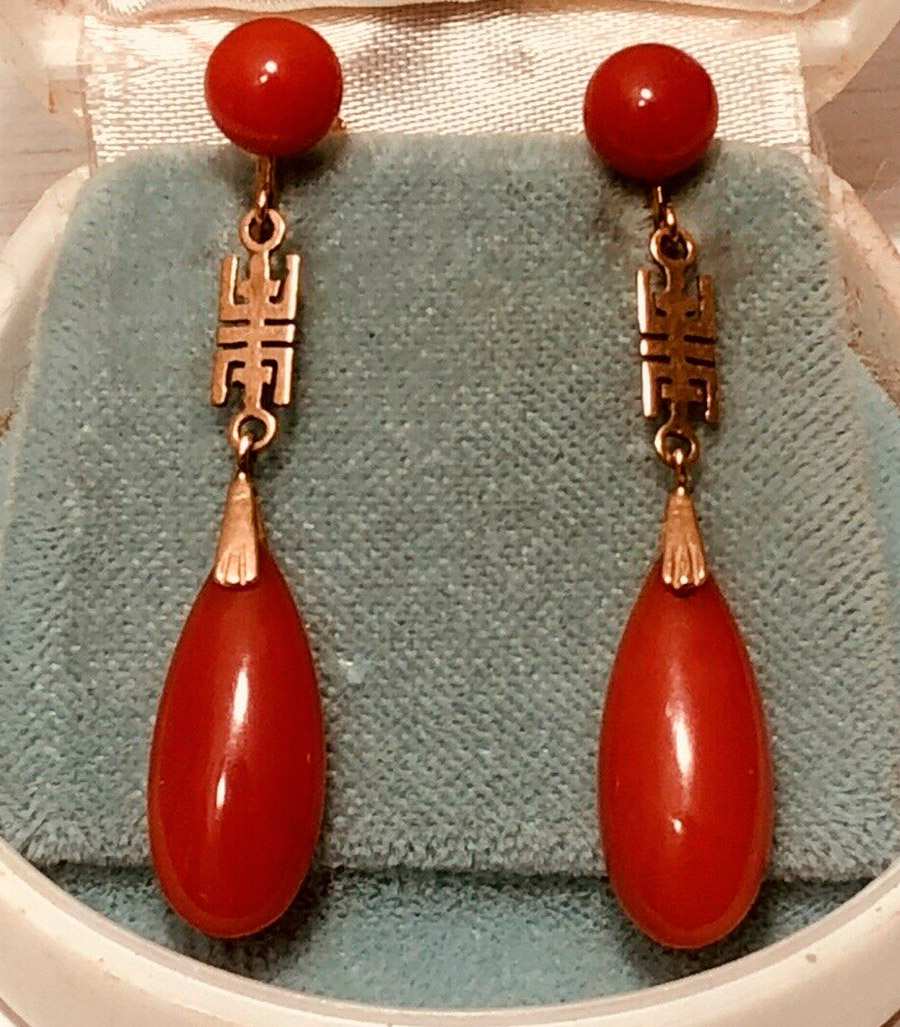
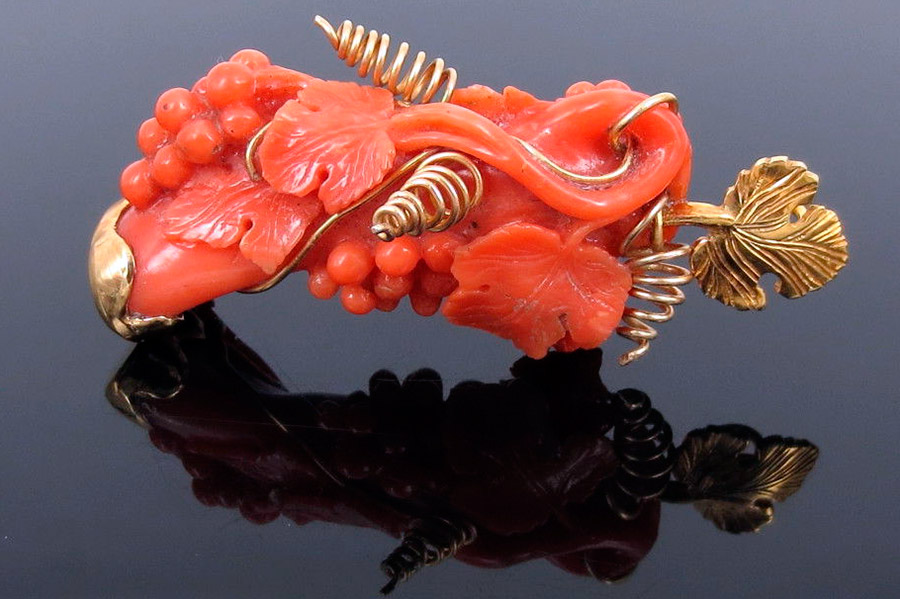
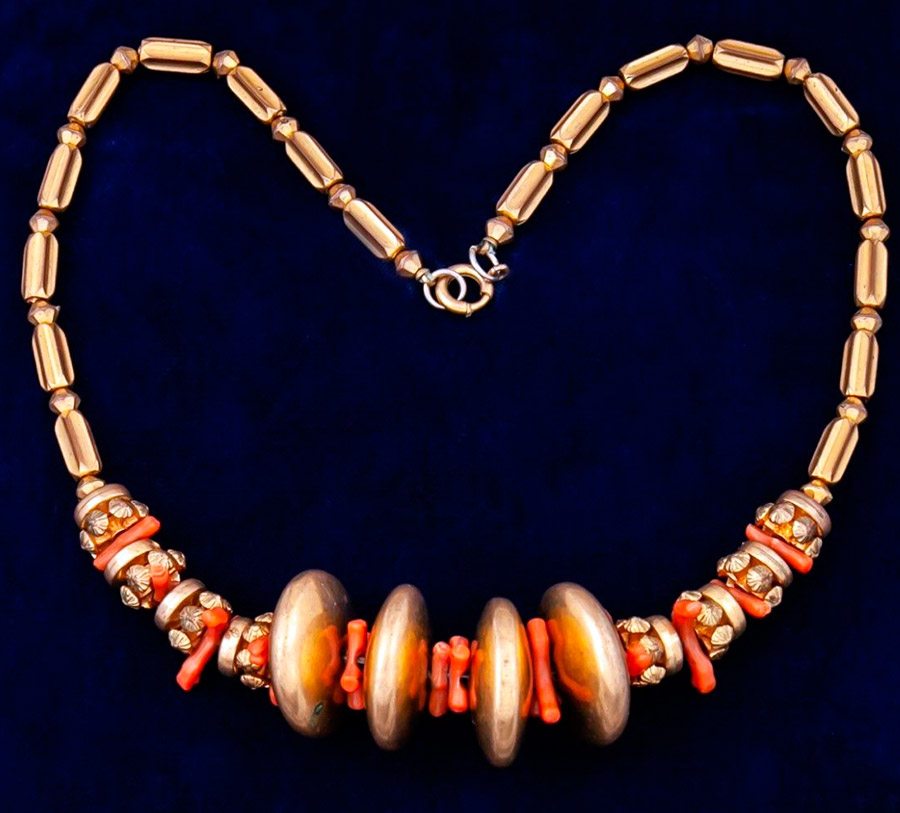
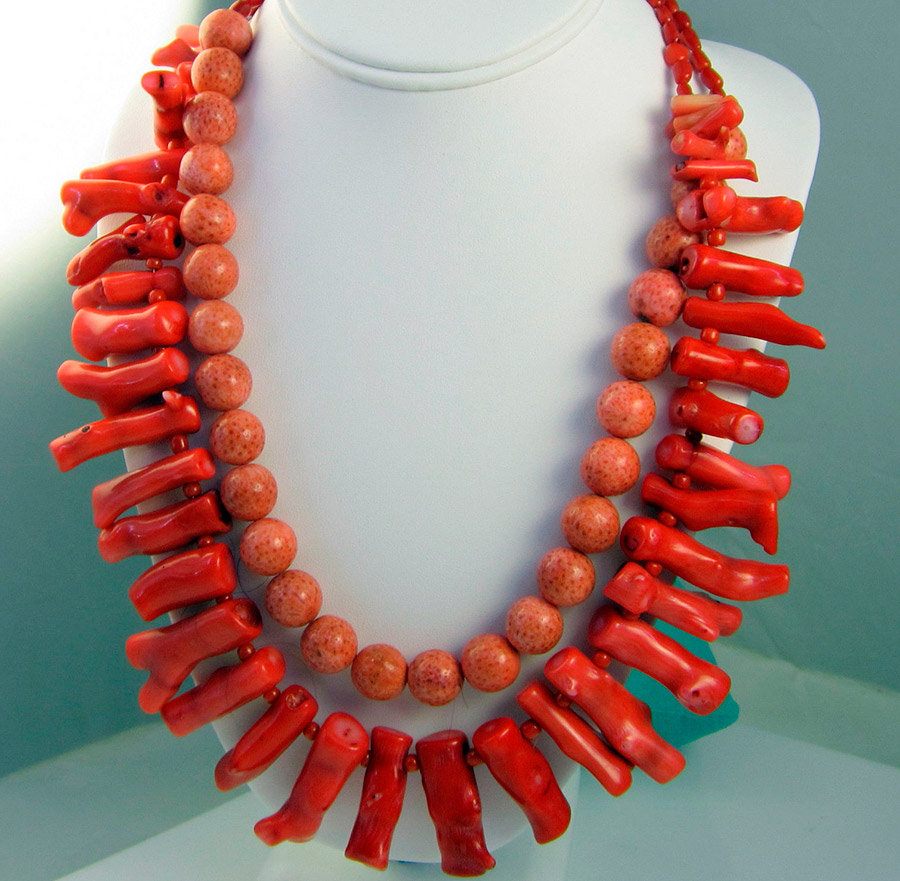
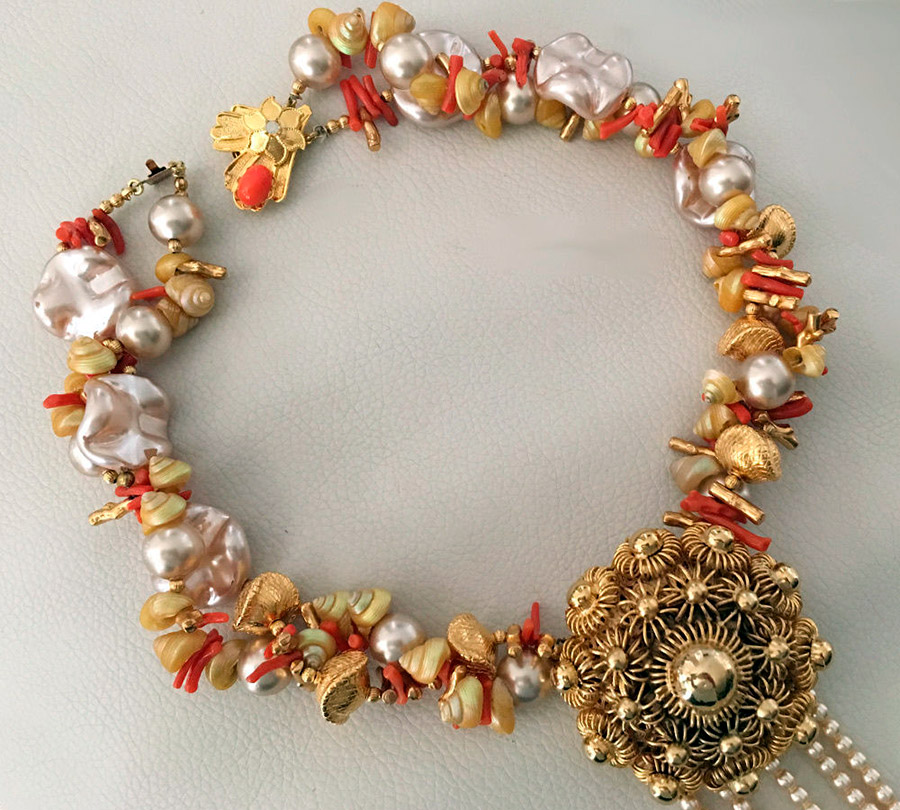
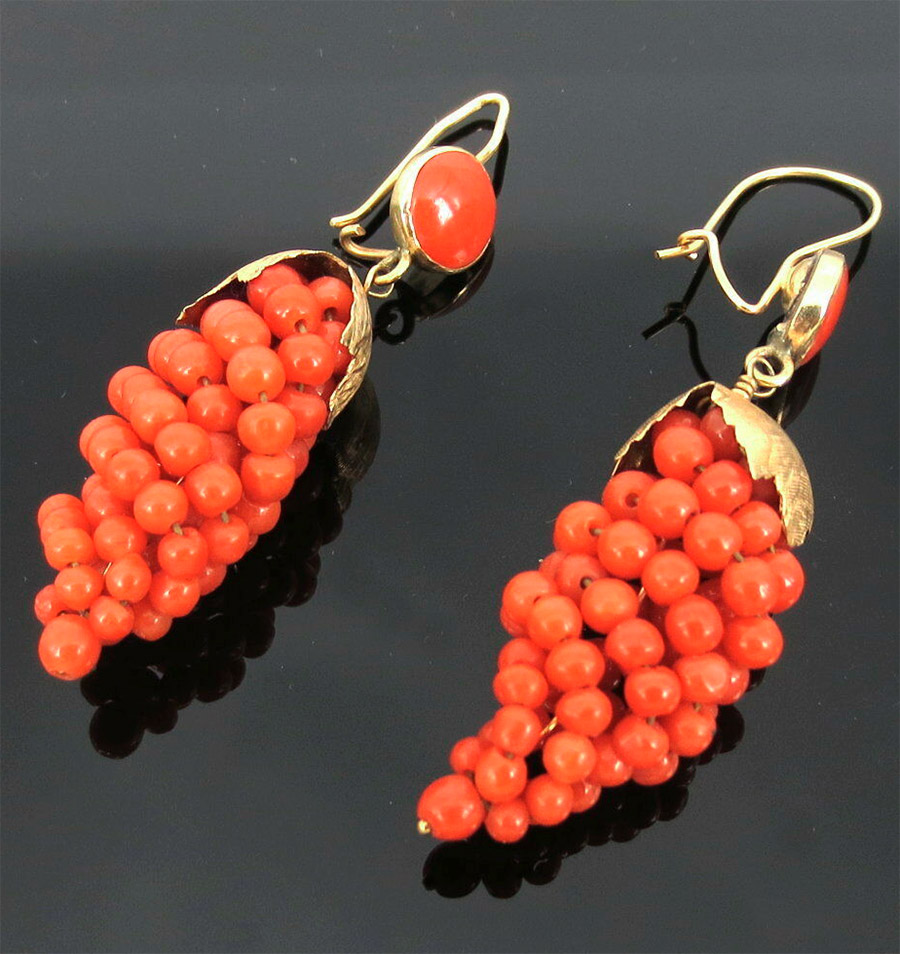
Comments and Reviews
Add a comment
Rating news
Shades of clothing that make women look younger
What shades of hair make women younger: rules and photos
Funny wedding dresses - photos and ideas
12 most expensive down jackets for the winter
How to look 25 at 40: tips from supermodels
Beautiful schoolgirls
Anti-aging haircuts and hairstyles for women
Fashionable skirts for autumn and winter
Fashionable women's trousers for the cold season
Fashionable and stylish sandals for summer 2024
Spring-summer 2024
 Fashionable dresses and tops with thin spaghetti straps
Fashionable dresses and tops with thin spaghetti straps
 Bandana tops: how to wear stylishly and beautifully
Bandana tops: how to wear stylishly and beautifully
 How to put together the perfect men's wardrobe for the summer
How to put together the perfect men's wardrobe for the summer
 Fashionable shorts for spring-summer 2024
Fashionable shorts for spring-summer 2024
 Fashionable skirts for spring-summer 2024: a guide to online shopping
Fashionable skirts for spring-summer 2024: a guide to online shopping
 The most fashionable dresses spring-summer 2024: styles and colors
The most fashionable dresses spring-summer 2024: styles and colors
 Fashionable total look 2024: ideas of images and trends
Fashionable total look 2024: ideas of images and trends
